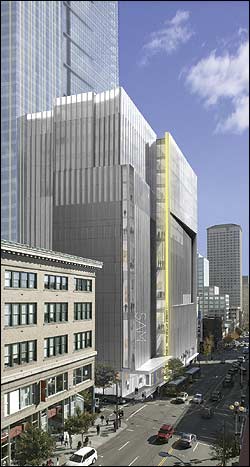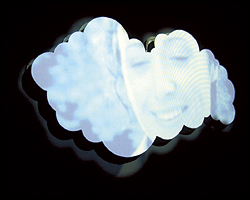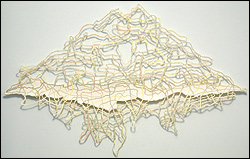For the folks at the Seattle Art Museum, last Wednesday was one of those days when you want to go home and crawl back under the covers. First, SAM announced that deputy director (and curator of modern and contemporary art) Lisa Corrin would leave in October to take a job at Williams College Museum of Art in Williamstown, Mass. Then, that same day on the work site of the museum expansion and Washington Mutual Tower downtown, a metal crossbeam fell and injured three construction workers.
It was an inauspicious series of events as SAM continues with its ambitious expansion plans downtown, at the Asian Art Museum on Capitol Hill, and at the planned Olympic Sculpture Park. (Groundbreaking is scheduled next month for the park, a daring design that nonetheless has been dogged by controversy about the fate of the city’s waterfront streetcar. The trolley’s maintenance shed sits smack-dab in the center of the proposed park.)
Corrin’s departure was a particularly hard blow for the museum. Since she arrived in 2001, the energetic curator has increased the presence of significant contemporary art at SAM—most notably a two-museum exhibit of work by Korean artist Do-Ho Suh, the regional art survey “Baja to Vancouver,” and “Between Past and Future,” a recent exhibit of contemporary Chinese photography and video. Of all her accomplishments, she says she’s most proud of the sculpture park, which is scheduled to open in the summer of 2006. (Corrin has agreed to serve as a consultant on the project until its completion.) Thanks to her efforts, the park won’t just be a parking lot for big modernist pieces by Calder and Serra, but will also showcase exciting new work from enviro-artist Mark Dion, local photographer Glenn Rudolph, and Teresita Fernandez, who designed the park’s glass pedestrian bridge.
One suspects the expansion projects took a toll on Corrin, however. Being deputy director meant more than just curating shows, and often Corrin found herself managing and motivating the museum’s other curators. That’s all part of being deputy director, she insists, and she has nothing but the highest praise for SAM’s staff and board of directors.
Yet she’s also ebullient about the prospect of leading the Williams College Museum, a veritable launching pad for careers in the East Coast art world. Many higher-ups at MOMA, the Guggenheim, and New York’s Dia Art Foundation have come from the ranks at Williams. Corrin admits to looking forward to entering the collegiate world, because, she says, “it’s not only about how many thousands of visitors come through, but about the currency of ideas.”
And those two elements are precisely what SAM needs to work on before it opens its new wing: attracting visitors (attendance dropped to 337,000 visitors in 2004, the lowest figure since 1999) and high-caliber, intellectually vigorous shows. Without Corrin, that challenge will be even greater. Finding a talented and well-connected curator—and giving him or her the time and resources to simply curate—will be crucial. Modern and contemporary art is, of course, only one facet of SAM’s mission as a general museum. But it’s one of the critical pieces that will help bring in a new generation of museum members and patrons.
One has only to look at the successes of the Henry Art Gallery, even the Frye Art Museum (the recent Joseph Park and Mark Ryden shows have been big critical and popular hits), to see that this is of paramount importance. When was the last time a show at SAM seriously caught the national media’s attention? Shows like the recent “Spain in the Age of Exploration” and “Van Gogh to Mondrian” were competent and had their pleasant surprises, but were nothing earthshaking.
If Seattle is serious about becoming a world-class center for art (and I think it has a solid combination of working artists, arts academia, museums, and galleries to be one), then SAM needs to use its newfound space to take curatorial risks. It needs to be bold in its hiring; just as the Seattle Public Library took a chance on Rem Koolhaas to design its central library, SAM needs to resist the temptation to be safe and conservative—especially when it comes to what’s on the walls inside. Corrin’s replacement will be a key part of that mission.
Attracting a star curator will be a huge order, considering that whoever is hired will face the distractions of fund-raising (SAM is still $55 million short of its $180 million capital campaign goal) and coordinating the opening of the sculpture park. But the promise of 118,000 square feet of additional gallery space might be the perfect lure. A lot is at stake, and if the museum fails to take the right steps, the result could be setbacks even more daunting than a few falling girders or stubborn trolley car supporters.







